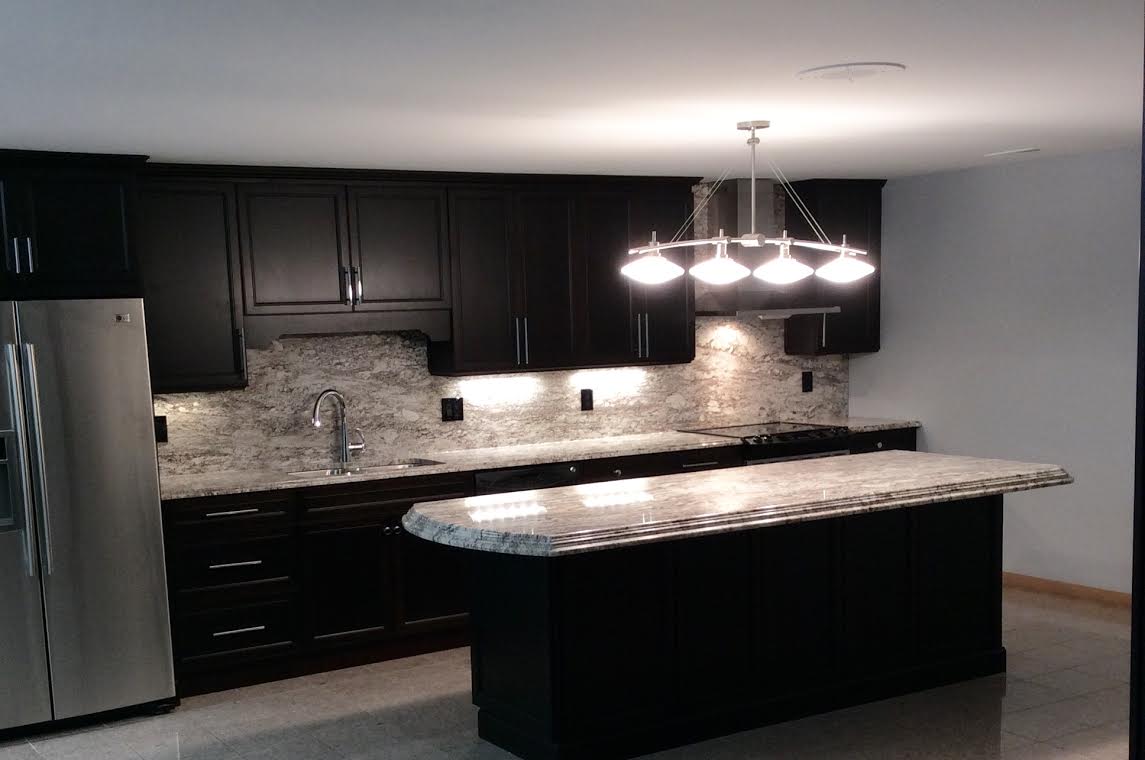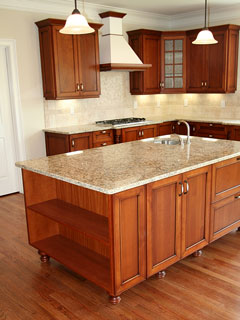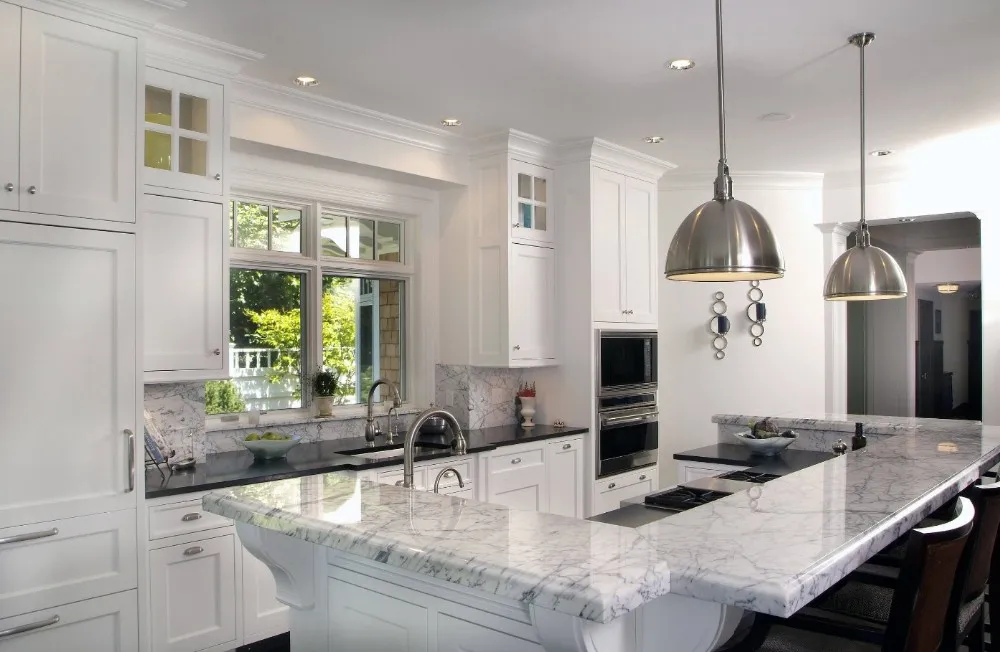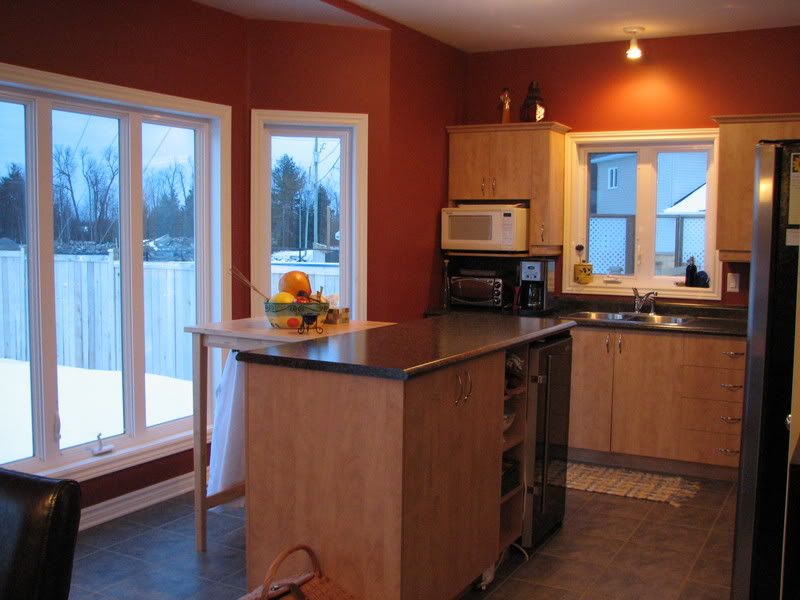Kitchen islands have become a staple in modern kitchen design, providing additional workspace, storage, and a focal point for social gatherings. While the aesthetic appeal and functionality of a kitchen island are undeniable, the cost of the countertop material can significantly impact the overall budget of your kitchen renovation. Fortunately, there are several affordable options available that do not compromise on style or durability. Exploring these budget-friendly alternatives can help you achieve the kitchen of your dreams without breaking the bank.

Affordable Countertop Materials
Laminate Countertops
Laminate countertops have been a popular choice for decades due to their affordability and versatility. Made from layers of paper or fabric impregnated with resin, laminated countertops are then bonded to a particleboard or plywood base. They come in a wide variety of colors and patterns, some of which can convincingly mimic the look of more expensive materials like granite or marble. The main advantage of laminate countertops is their cost-effectiveness, typically ranging from $10 to $40 per square foot.
Despite their budget-friendly price, laminate countertops offer several other benefits. They are easy to clean and maintain, requiring only regular wiping with mild soap and water. Additionally, laminate is resistant to staining and can handle light to moderate heat, though it is advisable to use trivets or hot pads to prevent damage. However, laminate countertops can be prone to scratching and may not be as durable as other materials.
Laminate countertops are also relatively easy to install, making them a suitable choice for DIY enthusiasts. Pre-fabricated options are available at home improvement stores, further reducing installation costs. With proper care, a laminate countertop can last for many years, making it a practical choice for budget-conscious homeowners.
While laminate countertops have many advantages, they are not without their drawbacks. The seams between laminate sheets can be visible, and the material is susceptible to damage from sharp objects. However, with advancements in manufacturing technology, modern laminates have become more durable and aesthetically pleasing, making them a viable option for cheap kitchen island countertops.

Butcher Block Countertops
Butcher block countertops are another affordable option that can add warmth and natural beauty to your kitchen island. Made from strips of wood glued together to form a solid surface, butcher block countertops are typically crafted from hardwoods such as maple, oak, or walnut. Prices for butcher block countertops generally range from $30 to $60 per square foot, making them an economical choice compared to stone or solid surface materials.
One of the primary benefits of butcher block countertops is their timeless appeal. The natural wood grain can complement a variety of kitchen styles, from rustic to contemporary. Additionally, butcher block countertops are highly functional, providing a durable and forgiving surface for food preparation. They can be sanded and refinished multiple times, extending their lifespan and maintaining their appearance.
Caring for a butcher block countertop requires regular maintenance to keep the wood conditioned and protected. This typically involves periodic oiling with food-safe mineral oil to prevent drying and cracking. While butcher block countertops are resistant to heat, they can be susceptible to water damage if not properly sealed. Therefore, it is essential to wipe up spills promptly and avoid placing wet items directly on the surface.
Butcher block countertops do have some disadvantages, such as the potential for scratching and denting. However, these imperfections can often be sanded out and may even add to the character of the countertop over time. For those seeking an affordable and attractive option for their kitchen island, butcher block countertops offer a unique blend of functionality and charm.

Tile Countertops
Tile countertops are a cost-effective alternative that can add a touch of personality and color to your kitchen island. Ceramic and porcelain tiles are popular choices due to their durability and wide range of designs. Prices for tile countertops vary based on the type and quality of the tiles, but they generally fall between $10 and $50 per square foot, making them a budget-friendly option.
One of the key advantages of tile countertops is their versatility. With countless colors, patterns, and textures available, it is easy to create a custom look that complements your kitchen decor. Additionally, tiles are resistant to heat, stains, and moisture, making them a practical choice for a busy kitchen environment. Grout lines, however, can be a drawback as they can accumulate dirt and require regular cleaning and sealing to prevent staining.
Installing tile countertops can be a DIY project for those with basic handyman skills, which can further reduce costs. However, achieving a professional finish requires careful planning and precise work, especially when cutting and fitting tiles around edges and corners. It is essential to use high-quality grout and sealant to ensure the longevity and appearance of the countertop.
While tile countertops offer many benefits, they also have some limitations. The surface can be uneven, making it less ideal for tasks that require a flat workspace. Additionally, tiles can crack or chip if subjected to heavy impact. Despite these drawbacks, tile countertops remain a popular choice for those seeking an affordable and customizable option for their kitchen island.

Maintenance and Durability of Budget Countertops
Cleaning and Maintenance
Maintaining the appearance and functionality of your kitchen island countertop is crucial, regardless of the material you choose. Each type of countertop requires specific care to ensure it remains in good condition over time. For laminate countertops, regular cleaning with a mild soap and water solution is usually sufficient. Avoid using abrasive cleaners or scrubbers that can damage the surface. For tougher stains, a mixture of baking soda and water can be used as a gentle abrasive.
Butcher block countertops require more intensive maintenance, including regular oiling to keep the wood conditioned and protected from moisture. A mixture of vinegar and water can be used for daily cleaning, while periodic sanding and refinishing may be necessary to remove scratches and stains. For tile countertops, cleaning the grout lines is crucial to prevent the buildup of dirt and bacteria. A mixture of baking soda and water, applied with a toothbrush, can help keep grout lines clean and fresh.
While all countertops require some level of maintenance, proper care can significantly extend their lifespan and maintain their appearance. It is essential to follow the manufacturer’s recommendations for cleaning and maintenance to avoid damaging the surface. Regular upkeep not only preserves the beauty of your countertop but also ensures it remains a functional part of your kitchen for years to come.
In addition to regular cleaning, it is important to address any damage promptly. For laminate countertops, this might involve repairing chips or scratches with a laminate repair kit. Butcher block countertops can be sanded and refinished to remove deeper gouges or stains. Cracked or chipped tiles on a tile countertop can be replaced individually, minimizing the need for a complete overhaul. By taking a proactive approach to maintenance, you can keep your kitchen island countertop looking great and performing well.

Durability Considerations
When selecting a budget-friendly countertop material, it is important to consider its durability and how it will stand up to daily use. Laminate countertops, while affordable, are prone to scratching and can be damaged by high heat. However, advancements in laminate technology have improved its resistance to wear and tear, making it a viable option for many households. Using cutting boards and trivets can help prevent damage and extend the life of a laminate countertop.
Butcher block countertops offer a warm and inviting surface that is gentle on knives and ideal for food preparation. However, they can be susceptible to water damage and require regular maintenance to prevent drying and cracking. With proper care, a butcher block countertop can last for many years and develop a rich patina that adds character to your kitchen. It is important to keep the wood well-oiled and sealed to protect it from moisture and stains.
Tile countertops are known for their durability and resistance to heat, making them a practical choice for busy kitchens. The main concern with tile countertops is the potential for grout lines to become stained or discolored over time. Using a high-quality sealant can help protect the grout and maintain the appearance of the countertop. Additionally, individual tiles can be replaced if they become cracked or chipped, making tile countertops a durable and long-lasting option.
Considering the durability of each material is essential when choosing a budget-friendly countertop for your kitchen island. While no countertop is completely maintenance-free, selecting a material that matches your lifestyle and level of usage can help ensure it remains a functional and attractive part of your kitchen for years to come. By balancing cost with durability, you can find an affordable countertop solution that meets your needs.

Design and Aesthetic Appeal
Style and Customization
One of the most appealing aspects of choosing a cheap kitchen island countertop is the ability to customize it to fit your personal style and the overall design of your kitchen. Laminate countertops offer a wide range of colors and patterns, including options that mimic the look of more expensive materials like granite, marble, and quartz. This versatility allows you to achieve a high-end look on a budget. Additionally, laminate can be cut and shaped to fit any kitchen island design, providing flexibility in your kitchen layout.
Butcher block countertops add a natural and warm aesthetic to any kitchen. The wood grain can complement a variety of styles, from rustic farmhouses to modern minimalists. Different wood species and finishes offer further customization options, allowing you to choose a look that matches your design vision. Edge profiles can also be customized, with options ranging from simple straight edges to more decorative ogee or beveled edges.
Tile countertops provide endless possibilities for creativity and customization. With a vast selection of colors, sizes, shapes, and patterns, you can create a unique design that reflects your personality and enhances the overall look of your kitchen. Mosaic tiles, for example, can be used to create intricate patterns or focal points on your kitchen island. Mixing and matching different tile styles can result in a one-of-a-kind countertop that stands out.
The ability to customize your kitchen island countertop is an important factor in achieving the desired look and feel for your kitchen. By choosing materials that offer a range of design options, you can create a cohesive and stylish kitchen that meets your functional needs while staying within your budget. Whether you prefer the sleek look of laminate, the natural charm of butcher block, or the vibrant versatility of tile, there is a budget-friendly countertop option that can bring your design vision to life.

Color and Pattern Options
Color and pattern play a crucial role in the overall aesthetic of your kitchen island countertop. Laminate countertops excel in this area, offering an extensive array of colors and patterns to choose from. Whether you prefer a solid color, a subtle pattern, or a bold design, laminate can provide the look you want at an affordable price. Modern laminates can even replicate the appearance of high-end materials such as granite, marble, and quartz, allowing you to achieve a luxurious look without the hefty price tag.
Butcher block countertops, while limited in color options compared to laminate, offer a natural beauty that is hard to replicate. The color and pattern of the wood grain can vary depending on the species and finish, providing a range of options from light maple to dark walnut. The warmth and character of wood can add depth and texture to your kitchen, creating a welcoming and inviting atmosphere. Different stains and finishes can further enhance the natural beauty of the wood, allowing you to customize the look to match your kitchen decor.
Tile countertops offer unparalleled versatility when it comes to color and pattern. With countless options available, you can create a custom look that reflects your style. From classic subway tiles to intricate mosaic patterns, the possibilities are endless. The ability to mix and match different tile styles and colors allows you to create a truly unique design that can serve as a focal point in your kitchen. Additionally, the durability and ease of maintenance make tile countertops a practical choice for busy kitchens.
Selecting the right color and pattern for your kitchen island countertop can enhance the overall design of your kitchen and create a cohesive look. By exploring the various options available with laminate, butcher block, and tile countertops, you can find a budget-friendly solution that complements your style and meets your functional needs. Whether you prefer a bold and vibrant look or a subtle and understated design, there is a countertop option that can bring your vision to life.

Installation and DIY Considerations
Professional Installation vs. DIY
When it comes to installing a kitchen island countertop, one of the key decisions you will need to make is whether to hire a professional or tackle the project yourself. Each approach has its advantages and considerations, and the best choice depends on your skill level, budget, and the complexity of the project. Professional installation offers the benefit of expertise and experience, ensuring that the countertop is installed correctly and efficiently. This can be particularly important for more complex materials like tile, where precision and attention to detail are crucial.
Hiring a professional can also provide peace of mind, knowing that the job will be completed to a high standard. Professionals have the tools and knowledge to handle any challenges that may arise during installation, such as uneven surfaces or intricate cuts. Additionally, many professionals offer warranties or guarantees on their work, providing added assurance that your investment is protected.
On the other hand, opting for a DIY installation can save you money and provide a sense of accomplishment. Laminate and butcher block countertops are relatively easy to install, making them suitable for DIY projects. Pre-fabricated laminate countertops are available at home improvement stores, and detailed instructions can guide you through the installation process. For butcher block countertops, basic woodworking skills and tools are typically sufficient to achieve a professional-looking result.
While DIY installation can be rewarding, it is important to realistically assess your skill level and the complexity of the project. Mistakes made during installation can be costly to fix and may result in a less-than-perfect finish. If you are unsure about your ability to complete the installation successfully, it may be worth investing in professional help to ensure a high-quality result. Ultimately, the decision between professional installation and DIY depends on your confidence, budget, and the specific requirements of your kitchen island countertop.

Tools and Materials Needed
Successfully installing a kitchen island countertop, whether professionally or as a DIY project, requires the right tools and materials. For laminate countertops, essential tools include a circular saw, jigsaw, drill, and clamps. A measuring tape, straight edge, and carpenter’s square are also necessary for precise measurements and cuts. Laminate adhesive and a roller are used to bond the laminate to the substrate, while a router with a flush trim bit helps finish the edges.
Butcher block countertops require basic woodworking tools, such as a circular saw or table saw, sander, and clamps. A drill and screws are used for securing the countertop to the island base. For finishing, food-safe mineral oil or a butcher block conditioner is needed to protect and maintain the wood. Sandpaper of various grits is also necessary for smoothing the surface and edges.
Tile countertops involve a different set of tools and materials. A tile cutter or wet saw is essential for cutting tiles to size. Trowels are used for applying adhesive and grout, while spacers help maintain even gaps between tiles. A grout float and sponge are necessary for grouting the tiles, and a sealant is used to protect the grout from stains and moisture. A level, measuring tape, and chalk line are also important for ensuring a straight and even installation.
Having the right tools and materials on hand is crucial for a successful countertop installation. Whether you choose to install the countertop yourself or hire a professional, being prepared with the necessary equipment can help ensure a smooth and efficient process. Proper planning and preparation can make all the difference in achieving a high-quality result for your kitchen island countertop.

Kitchen Countertops for Island

DIY Outdoor Kitchens and Grilling Stations

Black Countertop Backsplash Ideas work Black countertops

Related Posts:
- Cheap DIY Kitchen Countertop Ideas
- Plastic Kitchen Countertops
- How Much Do Granite Kitchen Countertops Cost
- Modern Kitchen White Countertop
- Kitchen Countertops Wood And Butcher Block
- Kitchen Countertop Tile Backsplash Ideas
- Molded Kitchen Sink And Countertop
- Turquoise Kitchen Countertops
- Kitchen Sink Countertop Ideas
- Kitchen Designs With Butcher Block Countertops